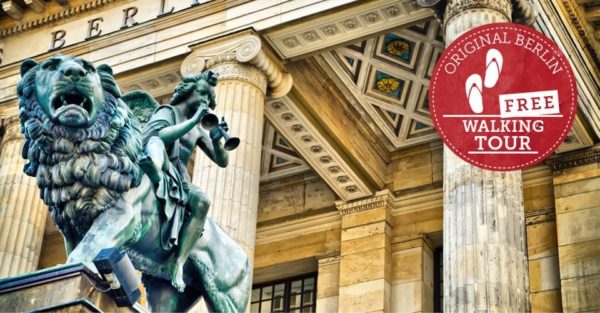Nothing can be as easily associated with the Cold War era as the Berlin Wall is nowadays. Rising within twenty-four hours in August, 1961, this monstrosity split families apart in the city of Berlin, and put the fear of ideological separation between east and west blocs into people. In this article the author is to discuss the role of the symbol, which is Berlin Wall and the historical, political, social aspects that where involved into it.
The Historical Context
In post World War II Germany, the country was split into four zones of occupation by the United Sates, Great Britain, France and the Soviet Union. Despite the fact that Berlin was in the Soviet area, it was also divided into four zones, so tensions arose between the wartime allies. These divisions became even sharper during the Cold war when western and eastern countries were dividing in terms of ideologies.
The Black experience is that the construction of the Wall in Berlin was mainly motivated by the urge of the Soviet Union to block the emulation of East Germans towards the affluent West. When the gap in economics between the two Germanys was growing, it led to a serious brain drain from East to West. To check this out flow of talent and manpower the East German government together with the support from Soviet Union decided to construct a barrier.
The Physical Barrier
The dividing line in Berlin was not only a wall; in fact it was a system of barriers which inlcuded walls, barbed wire, watchtowers and plenty of space called the death strip. The inner wall, especially that side facing West Berlin was equipped with watch towers and search lights to ensure that nobody would try to escape the barrier. The surrounding of the death strip was plain, while the outer wall that faced East Berlin was plain and smooth to be climbed.
Measuring at about 96 miles (155kilometers) running through the city of Berlin, the wall became the symbol of the divergence between East and west Germany. It was instrumental in the complete physical isolation of the population of East Berlin from West Berlin, social visits and union of families, friends or even simple interactions were difficult.
Checkpoint Charlie
The well-known crossing point, Checkpoint Charlie, served as the military, diplomatic as well as visitor frontier in the American sector. It made this checkpoint iconic during the Cold War and often the spring of aggressive confrontations between the US and USSR.
The Political Significance
The Berlin Wall and divided a city than just a city when it grew into a representation of a divided world. The construction of the wall symbolized the hostility displayed by Soviet Union, allied nations toward the western countries, bringing into a permanent seal the amity between the democratic nations of the west and the communists of the east.
For the United States and it’s allies, the Berlin Wall remained a symbol of Soviet resurgence and their commitment to continue their hegemonic takeover to spread communism to the free world. It became the emblem of anti- communism and of opposition to totalitarianism regimes all around the world.
The Peaceful Revolution
Over the years people became frustrated with the wall and the limitations it brought into their lives. The people in East Germany were dreaming of the same liberties and chances of the citizens of the West. Finally, in 1989, following a series of protests and political shifts in Eastern Europe, the unexpected happened: the Berlin Wall came down.
This event is was called the Peaceful Revolution and is considered as a turning point in human history . This song spinelessly expressed unity and the free spirit not only symbolizing Germany but the entire eastern bloc nations. The break-down of the Berlin Wall led to a reunion of both the east and west Germany on 3 October 1990 and facilitated the break age of USSR, the cold war being at an end.
The Human Impact
Subsequently, though the Berlin Wall was a political and ideological construct, it is impossible to underestimate its effects on people. People were broken off from their families, friends, and their lives as they knew it. The physical barrier of ‘the wall’ has a deeper impact which cannot be contained in political fallout.
Many examples are now known of great attempts to escape, many times at the cost of some lives. All of these stories show human spirit in either fighting or overcoming the odds. The Berlin Wall was an embodiment of tyranny, but at the same time it was the breakout of freedom and the extent to which people could go in order to be with those they loved.
The Mauerweg
Currently, parts of the Berlin Wall have been left as a historical sign of thecomplex history in this city. Tourists have an opportunity to visit the Mauerweg which is a 100 mile 160 kilometer trail that majors on walking and biking around the border and get to learn or even over think about the many impressions left by the wall.
Whether seen in the imposing Brandenburg Gate or at the somber East Side Gallery marked with steel-wool murals painted over the segment of the wall, Berlin Wall’s influence cannot be missed. This is a symbol of separation, and the dividing as a concept has its consequences, it also symbolizes resilience, the human spirit in search of harmony.
In conclusion, the Berlin Wall has separated a city ,but also it separated the world . In Cold War it symbolized ideas, politics and territorial divide between the East and West Blocs. But all the same it was felled by the fight of people who wanted to make the world a better place to live. This in a way acts as a continiuation of the previous verse in the sense that it reminds people of the strength that lies in unity and the need to be free regardless of the oppression that one may go through.
Table of Contents

